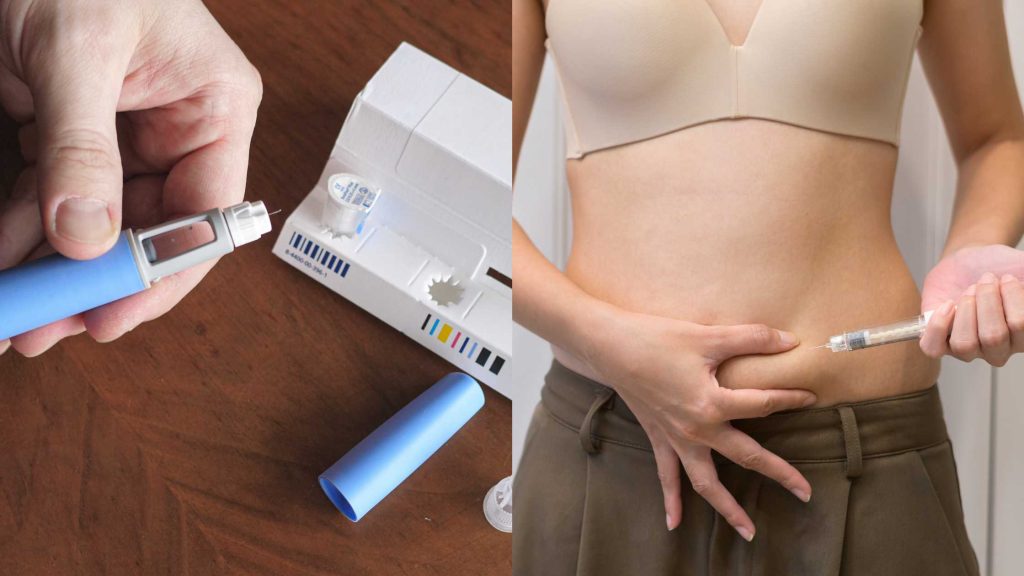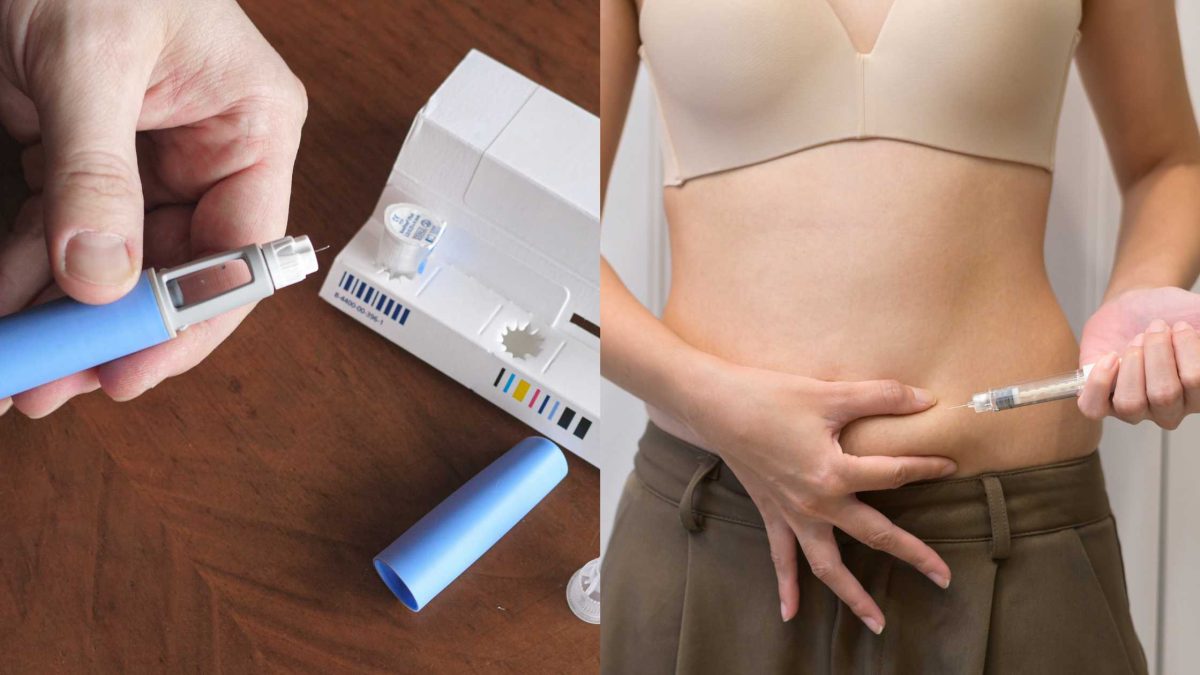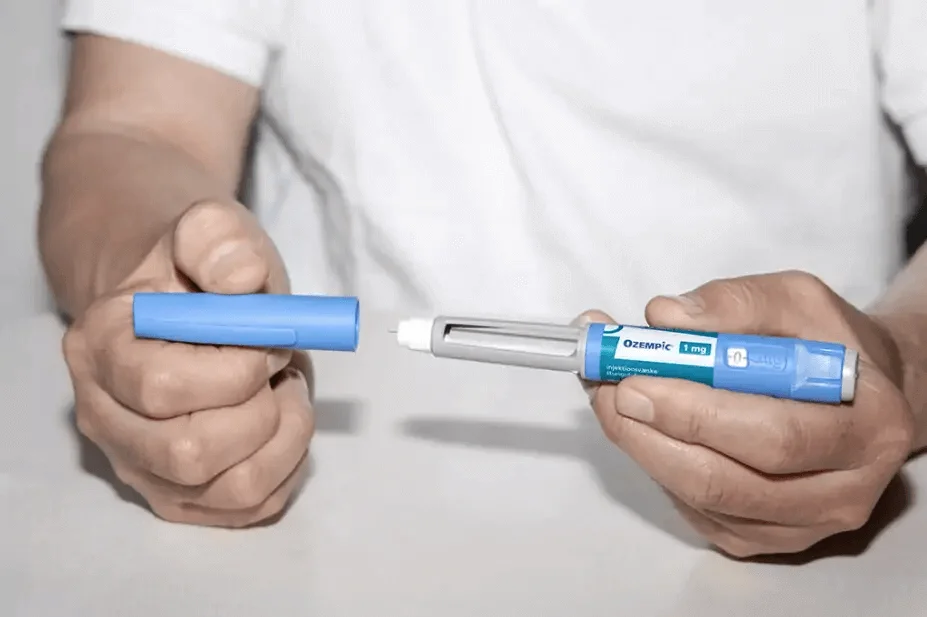Key Takeaways
-
Small, consistent changes in daily habits build emotional resilience. They reinforce neural pathways through repetition and support long-term wellbeing.
-
Applying habit loops to a different log, we see how one cue or reward at a time can replace negative behaviors with manageable positive ones.
-
Start with one small, value-aligned action, like a one-minute mindful break, a quick walk, or a nightly wind-down to prevent overwhelm and monitor your progress.
-
Recognize little victories, reduce goals to micro-goals, and record progress to increase self-efficacy and maintain momentum.
-
Expect challenges such as impatience, inconsistency, and self-doubt. Address these with reminders, habit stacking, and self-compassion.
-
Unhelpful commitments and clutter, when eliminated or reduced, pave the way for good habits to fulfill your life with meaning and passion. This enables small changes to ripple into big life change.
Small Changes, Major Healing is a practical approach to improving wellbeing through simple daily shifts. Small things like short breathing breaks, clearer boundaries, and quick gratitude notes cultivate a more consistent mood and stronger stress responses over time.
These steps fit busy lives and require little time or money. The post details steps, timing advice, and tracking suggestions so readers can experiment with techniques that suit their schedules.
The Science Behind Small Shifts
Small shifts in behavior and mindset can have measurable effects on emotional health by reshaping your day to day inputs and reinforcing adaptive responses. When tiny adjustments are repeated, they add up and shift internal set points for stress, mood, and motivation. Studies identify that small habits can significantly curb mild to moderate symptoms of mental disorders and that measurable brain changes can occur after two weeks of practice.
It’s here that the book gets particularly valuable, breaking down how neurobiology and behavior science explain why modest steps often outperform grand plans.
Neuroplasticity
The brain rewires itself with use — neuroplasticity. Repetition of a new behavior or cognition reinforces the neural path that sustains it. Even these small acts, such as two minutes of focused breathing or a short gratitude note, can start to nudge networks towards calm or positive appraisal.
Imaging studies observe visible shifts after around 14 days of consistent practice. Most people experience mood shifts within 7 to 10 days. Over three weeks, these small, repeated acts result in more defined changes in connectivity and function.
Neuroplasticity underpins resilience as it allows us to construct and retrain reactions. One step toward a new behavior can start a cascade of change and alter how future stressors are processed.
Habit Loops
Cue, routine, reward: this loop explains how habits form and how small tweaks break or build them.
-
Wake-up light exposure within 30 minutes signals alertness and prepares the day.
-
One-minute walks after extended sitting breaks help you think and boost clarity.
-
Five minutes of tracking or gratitude each evening reaffirms a positive focus.
-
Exchange scrolling for a quick stretch routine to calm your arousal before bed.
Small habit changes in the everyday piece shift the entire loop. Small tweaks are easier to maintain and thus more likely to stick than wholesale overhauls. Just this simple tracking increases success rates by around 40 percent, and most habits become automatic after 50 to 60 days of consistent practice.
Day after day, these small tasks make your patterns strong and healthy.
Cognitive Dissonance
When actions and beliefs are out of alignment, distress ensues. Small behavioral steps narrow that divide. Doing something, anything consistent with your values reduces cognitive dissonance and stabilizes your mood.
Such a brief practice, such as recording one good thing each day, gears thinking toward a positive lens and can actually lessen symptoms of depression within a couple of weeks. Small mindset shifts relieve emotional pressure by altering the frame and appraisal of events.
Pinpoint one small easy tweak that echoes a value and test it out for a fortnight. Small wins build the faith and drive that inspire additional transformation and generate a more genuine direction in life.
How to Implement Minor Adjustments
Tiny tweaks can unlock journeys to profound emotional restoration. Here is a concise framework for implementing small shifts in daily life, complete with practical steps, examples, and why they work. Implement one small change at a time, measure your results, and choose habits that align with your values.
-
Start with one small task, then build up: choose a single, concrete action you can do daily (for example, five minutes of breath practice upon waking). That single success boosts your confidence and motivation to make additional change easier.
Maintain a straightforward ledger—date, activity, emotion—to observe the compound impact across weeks. James Clear’s idea of tiny gains applies here: small, steady habits add up to large change over time.
-
Track improvements to see the compound effect: use a calendar, app, or notebook to mark completed days. Audit your week and log mood changes.
Tracking makes nebulous change tangible and minimizes the likelihood of quitting when progress seems sluggish.
-
Prioritize habits that reflect your values: choose small changes that matter to you, such as more restful sleep, clearer relationships, or less reactivity.
Values keep you going and make change meaningful, not just hard.
1. Mindful Moments
Plan minute breathing breaks for fixed times, such as before meetings, after emails, or mid-afternoon. Small breaks reset your brain, alleviate overwhelm, and increase concentration.
Create a small corner for relaxation: a cushion, soft light, and one calming object. Or employ it for a quick two to ten minutes of seated breathing or guided meditation.
Bringing mindfulness to chores, being attentive while doing the dishes or walking, transforms these boring tasks into incremental development exercises.
Try being thankful for one thing every night to take your mind off the stressors and onto good things. This easy habit combats stress and creates a positive attitude after a while.
2. Thought Patterns
List unhelpful thinking you observe—catastrophizing, all-or-nothing language—and write one helpful alternative for each. For instance, shift “I always screw up” to “I made a mistake. I can learn.
Use brief self-talk cues throughout the day. When the automatic negative thoughts come, pause, label the thought, and reframe.
Repetition cultivates a growth mindset and hardens emotional steel over time. Acknowledge autopilot and establish reminders to check in mentally.
Eventually, the brain picks up new habits and the old reflexes fade.
3. Daily Rhythms
Set a sleep schedule: bed and wake times within 30 minutes each day. Sleep well. Morning tiredness and irritability over small things point to a lack of regular sleep.
Insert micro-activities such as a 10-minute walk or five minutes of post-lunch stretching to reduce stress and boost self-esteem. Pair bouts of focused work with intermittent breaks.
Short pauses rejuvenate focus, increase efficiency, and reduce stress. Small nutritional shifts, such as incorporating whole grains or good fats into one meal, help sustain energy and a positive mood.
4. Social Connections
Make small, intentional gestures: send a brief message, share a short call, or offer help. Weekly check-ins with friends or family feed connections and combat loneliness.
Enlist in a group class or hobby to broaden support networks. Positive social influences stabilize emotion and offer practical support under stress.
5. Physical Space
Clear out a single drawer or corner to reduce sensory load and anxiety. Introduce soothing touches, such as a few plants, gentle illumination, or even a hint of fragrance, to make your home a more relaxing place.
How to make small changes. Small space tweaks lower friction and simplify habits.
The Ripple Effect
They create a ripple effect of impact and inspiration. Even a small shift, a minute pause before answering, a random thank you note, or a ten-minute daily walk can ripple out to change moods, habits, decision patterns, and relationships.
These acts change internal feedback loops. Small successes raise dopamine a bit, reduce stress a bit, and make an adjacent choice easier the next time. Over weeks and months, those simpler decisions accumulate into new desired routines, new desired environments, and new desired emotional states.
Building Momentum
Marking these minor victories with a celebration provides the juice to maintain momentum. Celebrating a five-minute victory, a task completed, or a streak maintained provides tangible evidence of progress. That evidence minimizes doubt and encourages more action.
|
Incremental change |
Frequency |
Short-term effect |
Long-term impact |
|---|---|---|---|
|
5-minute daily reflection |
Daily |
Slight clarity |
Better emotional regulation |
|
One extra hour of sleep |
Nightly |
Less fatigue |
Improved mood and focus |
|
Small act of kindness |
Weekly |
Lift in mood |
Strengthened relationships |
|
10-minute practice of a skill |
Daily |
Skill retention |
Noticeable competence gain |
One, two, three – steady small steps that compound into skill and habit. Acquiring any new skill, such as public speaking, stress management, or boundary-setting, depends on repeated practice with intention.
Early wins from small tweaks are like evidence. They demonstrate success, motivate persistence, and calm apprehension about big transformation. That minimizes the requirement for radical swerves and decreases the risk of burnout.
Little changes in attitude create a different atmosphere at home or the office. A clearer boundary, a habit of listening fully, or a habit of sharing plans can calm friction and model different responses for others.
Such modeled behaviors beckon mimicry, not coercion but example.
Boosting Self-Efficacy
Set goals you can achieve on a regular basis. When they are manageable, they give quick feedback and grow faith in one’s ability to change. Begin with a micro-goal, such as two minutes of breath work, one brief check-in with your emotions, or one task completed before your morning coffee.

Accomplishing even these minor goals reinforces that feeling of empowerment. Think back to your own triumphs generated by tiny modifications. Jot down moments where a minuscule effort resulted in an outsized return.
That record becomes something to refer to when the motivation wells run dry. Break big ambitions down into small clear steps. Big goals tend to stall because they seem far away.
Micro-steps keep momentum concrete and decision points easy. Consistency in small behaviors builds emotional resilience. Over time, consistent habits alter how individuals deal with stress, not by eliminating it, but by expanding their ability to manage it.
Overcoming Common Hurdles
Small changes often meet the same barriers: impatience, inconsistency, and self-doubt. These obstacles will stop you dead in your tracks unless you confront them with actionable solutions. Routines provide a foundation that adds stability when life changes, and small habits such as short meditation, journaling, and bodywork make transformation doable instead of daunting.
Impatience
Recognize the compound effect: tiny actions add up over weeks and months. Capture momentum with easy metrics — a single line per day or a weekly count — so incremental victories become clear. When results drag, redirect your focus from the reward to the ritual.
Find pride in presence, not immediate accomplishment. Practice little rituals that denote commitment — like a two-minute breathing exercise before work — to condition patience with repeated, low-stakes victories. Patience sustains habit adhesion. Otherwise, we let go at the initial glimmer of a slow week.
Inconsistency
Anchor new behaviors with clear cues and reminders. Use phone alarms, notes on the mirror, or a post-meal action that ties to an existing task. Coupling new habits to stable parts of the day helps them stick.
Create a realistic schedule. Short, fixed sessions work better than vague intentions. Accountability hones follow-through. Share goals with a peer, join a pod, or use a streaks app. Routines aid in the face of uncertainty by reintroducing normalcy.
If a day feels particularly out of control, a reliable morning or evening routine lends it stability. Anticipate jaggedness, schedule for it, and hold the rhythm instead of waiting for things to align.
Self-Doubt
List mini victories to create proof to combat your negative beliefs. Record for a minute or two each day your progress and moments that felt simpler or more obvious. A few weeks later, the list is evidence.
Request assistance from trusted colleagues who provide concrete cheerleading, not general hand-waving. Focus on actions within your control: a short walk, a mindful pause, or a single completed task. This alleviates perfection pressure and maintains forward progress.
Be kind to yourself when you encounter setbacks. Allow yourself to be disappointed without allowing it to wipe away your previous progress. An emotional gamut is par for the course in transition — from exhilaration to trepidation — and letting those emotions flow facilitates healing and growth.
Mindfulness and short meditations can soothe the mind, maintain focus in the moment, and reduce stress over potential future results. Routines, sleep, and good meals, gratitude notes, and short mindfulness help create a toolkit. Use them to confront obstacles, learn from them, and continue advancing with healthy, doable strides.
The Power of Subtraction
By subtraction, I mean pulling things out to make space for what counts. This section describes why subtracting the unhelpful — objects, habits or commitments — frequently results in clearer thinking, steadier mood, and simpler growth. As history, design and even modern research demonstrate, small subtractions can make a big impact even when those changes feel understated.
The power of subtraction. Physical clutter strains focus and increases anxiety. Even just clearing a desk or entryway can eliminate friction from your day and liberate mental energy for work or relaxation. Historical examples show the same idea: monks who renounced possessions and Daoist thinkers who lived with nature found more focus and less inner strain.
In reality, begin with a single zone, donate or recycle anything you haven’t used in the last year, and experience a decreased decision burden.
The power of subtraction. Habits like doom-scrolling, mindless snacking, or sticking in draining relationships provide little harm that accumulates. A study on ultra-processed foods connects them to increased death risk from cardiovascular disease and anxiety disorders, which means reducing such foods benefits both the body and mind.
Trade a scroll session before bed for a ten-minute walk, or trade a sugary snack for some fruit. These small subtractions often trigger a domino effect: one removed habit opens room for another positive choice.
There’s something about simplifying routines that clears your mind and returns a sense of balance. This “less is more” notion appears in design, where Ludwig Mies van der Rohe preferred stark lines and fewer decorations to minimize clutter and highlight shape.
Apply the same lens to daily schedules: pare back recurring meetings, limit apps that send constant alerts, and keep only three priorities per day. Simpler routines minimize cognitive switching and free up time for restorative activities.
Exercise deliberate slacking by subtracting commitments. Turn down one social commitment a month or scale volunteer work back to a manageable volume. Liberating calendar space makes it easier to rest guilt-free.
Subtraction can be subtle at first; its rewards are incremental. As researchers such as Benjamin Converse, Gabrielle Adams and Leidy Klotz have demonstrated, subtraction frequently enhances decisions and results even when its impact appears marginal.
As we’ve seen through examples from Gandhi, Thoreau, and Diogenes, there is a long tradition of opting for less to achieve inner freedom. Begin modestly. Cull a single habit or object, monitor the impact on your mood, sleep, and focus, and iterate.
Real-Life Transformations
Real life examples demonstrate how small, gradual shifts can result in big emotional healing. Here’s a quick case table that traces the original problem, the small change applied, and the outcome over time.
|
Case |
Small change |
Time frame |
Result |
|---|---|---|---|
|
A — Panic and isolation |
Added a 10-minute morning walk |
6 weeks |
Reduced panic episodes; improved sleep and mood |
|
B — Prolonged grief |
Wrote one gratitude sentence daily |
3 months |
Found calmer routines; 30–70% reported growth through grief work |
|
C — Chronic fatigue and low mood |
Replaced one processed meal with whole food daily |
4 months |
More energy; better mood regulation |
|
D — Post-trauma avoidance |
Weekly 30-minute check-ins with therapist |
1 year |
40% show significant healing within first year; routines helped long-term adjustment |
|
E — Loss of purpose |
Volunteered two hours monthly |
3 years |
Increased life appreciation and empathy; meaning-making led to growth |
Small habit turns usually begin with one obvious, doable action. Just a 10-minute walk can significantly reduce stress and improve mood both via exercise and short bursts of exposure to daylight.
Easy diet switches, such as one piece of fruit or a wholesome meal per day, decrease inflammation and stabilize mood. The gratitude practice of One Sentence a Day turns your attention away from what you lose to what you have.
James Clear observes in Atomic Habits that these micro-wins compound, making change less risky and easier to maintain. These small course corrections are the magic bullet when it comes to chronic patterns.
Creating a brief consistent routine post-trauma, fixed times for sleep and meals for example, coheres with the finding that routines during the first year promote long-term adjustment. Meaning making, such as journaling on loss or organized remembrance rituals, promotes post-traumatic growth.
Research finds that 30 to 70 percent of individuals undergoing grief find meaningful growth in the process of exploring their pain. Over three years, those who maintain such habits are more likely to exhibit life appreciation and compassion shifts, with 65 percent and 51 percent reporting such shifts respectively.
Guided models assist people in situating these minor changes within a broader map. William Bridges’ transition model distills external change from internal transition, providing a frame to embrace endings, survive the neutral zone, and launch new beginnings.
This illuminates why small, consistent habits—therapy appointments, short walks, diet tweaks, volunteer hours—can transform identity and cultivate endurance.
How to start: Pick one tiny action tied to an existing habit, make it specific, and track it for six weeks. Anticipate rapid recovery. Almost 50% improve within six weeks of treatment.
Make the step small enough to replicate, then supplement.
Conclusion
Small acts accumulate. Tiny shifts in everyday routines boost your mood, reduce your stress, and foster confidence. Choose one minor adjustment. Try a five-minute breathing break after work. Exchange one negative thought for a fact. Eliminate one source of noise in your day. Monitor it for a fortnight. See sleep, concentration, and mood transform.
Real folks presenting real, actionable steps and real, simple victories. A quick walk softened sorrow. One tranquil hour ushered in rest. Less is more: drop what drains and keep what fits. Healing takes its time. Keep the plan simple, keep the aim clear, and measure the little victories.
Just one change today. Notice what changes in two weeks. Do it again with what works.
Frequently Asked Questions
What evidence shows small changes lead to major emotional healing?
Research in psychology and neuroscience reveals that repeated small actions rewire your brain and habits. Regular micro-steps make you feel better, less stressed, and more resistant. Clinical trials and longitudinal reviews support these insights.
How quickly can I expect results from minor adjustments?
You’ll see micro changes in mood within days. More enduring emotional change generally requires weeks to months of steady work. The frequency and quality of each small step accelerate progress.
Which small practices are most effective for emotional healing?
Easy habits such as short mindfulness, gratitude, sleep, movement, and tiny boundaries all do wonders. They are simple to replicate and consistently boost emotional regulation and lucidity.
How do small changes create a ripple effect in relationships?
Small shifts in how we listen, empathize, and show up differently change the way others respond. Over time, enhanced interactions develop trust and healthier patterns, sending ripples of benefit through social and work relationships.
How do I stay consistent with tiny changes?
Anchor new habits to existing ones. Keep the steps under five minutes. Track progress. Celebrate small wins. Consistency trumps intensity for sustained change.
What common hurdles block progress and how do I overcome them?
Common hurdles: perfectionism, impatience, and overwhelm. Conquer them by reducing ambition, focusing on a single micro-habit, and using cues or accountability buddies.
When is professional help needed despite small changes?
Consult a professional if emotional pain is intense, enduring, or disrupts life. Small changes are great, but therapists or clinicians help with diagnosis, customized plans, and crisis intervention.
















